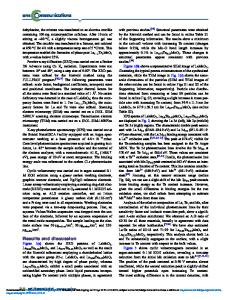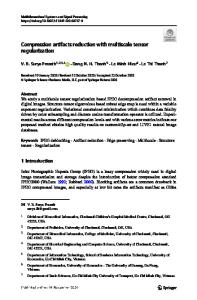Multi-scale porous graphene/activated carbon aerogel enables lightweight carbonaceous catalysts for oxygen reduction rea
- PDF / 449,493 Bytes
- 11 Pages / 584.957 x 782.986 pts Page_size
- 93 Downloads / 896 Views
talytic property toward oxygen reduction reaction (ORR) plays a significant role in the power generation of fuel cells (FCs). Here we demonstrate a graphene/activated carbon aerogel (GA/AC) composite to facilitate the ORR process, which is synthesized by a one-step hydrothermal method. The aligned pores and high porosity enable its mass density 20-times lighter than bare AC. Electrochemical studies show that the composite exhibits a remarkably improved electro-catalytic performance. The onset potential shifts positively from 0.68 to 0.83 V, and the number of electrons transferred is increased from 2.85 to 3.52, indicating that a four-electron pathway dominates the ORR process. This composite presents a mesoporous structure containing a large number of multi-scale pores and having a high specific surface area of 758.19 m2/g, which is responsible for its excellent onset potential and charge transfer rate. These aerogel-composites show great potential as ORR catalysts for assembling lightweight FCs and metal-air batteries.
I. INTRODUCTION
The energy crisis and environmental pollution have propelled a strong interest in the development of alternative and renewable energy sources. In contrast to the centralized energy supply manners, distributed generation systems generate the small-scale energy located near the customers or in remote areas. Conventional distributed generation methods cover various energy storage and conversion techniques, such as heat engines, fuel cells (FCs), capacitors, batteries, and solar cells. The benefits of such distributed energy sources are eliminating the losses from long-distance transmission and capital cost from accessory devices. Among those, FCs offer us a promising avenue toward chemical energy conversion and green electricity generation. The operating principle of FCs is similar to metal-air batteries which combine fuel (e.g., hydrogen) with an oxidant (oxygen from the air) through electrodes and an ion conducting electrolyte. But it allows devices to operate for a satisfactory length time compared with batteries and capacitors without plugging into an electricity input.1–3 A fuel cell runs as long as reactants are sufficiently supplied to the working chambers, and the typical byproducts are water and heat. Yet, noble metal catalysts are required to trigger the oxygen reduction reaction (ORR) occurring at the cathode (i.e., the electrode that consumes electrons). So far, Contributing Editor: Tianyu Liu a) Address all correspondence to this author. e-mail: [email protected] DOI: 10.1557/jmr.2017.372
the most efficient catalyst for ORR has been still considered as platinum nanoparticles and Pt-based metal alloys. On one side, 0.25 g of Pt as a catalyst is typically needed to deliver a unit kilowatt of power for current FC techniques.4–7 Fewer than 10 million FC-powered vehicles could be manufactured if the annual production of platinum was devoted to these vehicles.5 In general, platinum suffers from the naturally existing resource constraint. On the other side, the use of platinum bring
Data Loading...










